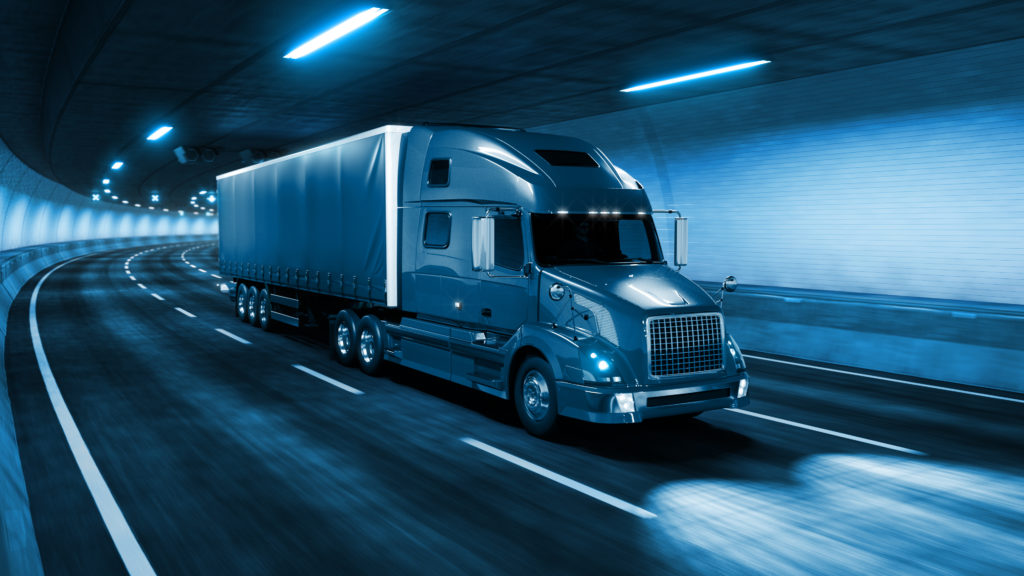Autonomous driving is dominating headlines in the trucking world, as more and more fleets turn to the innovative technology to boost potential safety numbers and mitigate traditional trucking challenges.
Some of the latest efforts in autonomous trucking come from Daimler Trucks North America, which is working to create a custom Class 8 chassis that will integrate SAE Level 4 driving support. This innovation is a collaboration with Waymo, a major autonomous technology company.
SAE Level 4 tech is a system of automated driving allowing a truck to self-drive without a driver needed in the cab as backup. Typically, automated driving systems allow for a truck to follow strict, specific safety protocol to avoid critical incidents and risks, without any input from a human.
More than 1,500 updates from Waymo Via (Waymo’s autonomous goods delivery unit) will be integrated into the Freightliner Cascadia Model, which will also obtain back up systems for its low-voltage power net, communication network, steering, and braking.
Daimler’s efforts come as a continuation of ideas discussed years ago, according to Bishop Consulting’s principal, Richard Bishop.
“While the specifics of Daimler’s announcement will surprise no one developing automated trucks, the timing shows the continuing momentum of this market,” he said. “Across the board, automated vehicle system developers agree that redundancy of key elements in the host truck platform are essential for safe deployment of automated trucking.”
This innovation also comes after Volvo Autonomous Solutions’ announcement regarding efforts being made around the North America autonomous Volvo VNL model–a collaboration with Aurora Innovation Inc. Aurora Driver autonomous technology was implemented into a Volvo Trucks long haul VNL model prototype.
A truck like this “can significantly contribute to enhancing safety in traffic, thanks to its redundancy of systems and a multitude of sensors,” said head of Daimler’s autonomous technology group, Peter Vaughan Schmidt. “It brings us much closer to our vision of accident-free driving.”
Daimler has also set forth an Autonomous Technology Group as an international organization for automated driving, a group that will work toward an overarching automated driving strategy and set of guidelines. To do so in a timely manner, the group will dive into operations network and infrastructure implementation, as well as the testing, research, development, and manufacturing of all necessary operations and technology needed to progress the AV movement forward.
The Freightliner chassis will include systems such as an additional, cybersecurity-protected communication network for certain devices; two electronic control units in both a primary and secondary system that will allow for peak brake performance in addition to system minimal risk maneuver execution abilities; and two servo motors within the steering system to allow for the backup servo motor to obtain the needed steering angle from the AV software and take action as necessary in the case of a hydraulic or electronic failure.
Additionally, the autonomous truck will require a low-voltage power net fit to meet the demands of ECU and sensor power usage–the power net developed at DTNA allows for regular critical system energy flow. Daimler will work also with Torc Robotics, a subsidiary of the company, in addition to Waymo, in order to allow for commercialization of this tech to be utilized along multiple routes.
Daimler believes that these innovations could not be coming at a more pressing time as the trucking industry continues to face a record-breaking truck driver shortage, worsened by so many drivers deciding to leave the industry due to poor work-life balance and a lack of benefits, comfort, and ease. The hope here is that automated technology will allow for a more intuitive commercial truck driving experience for operators, possibly incentivizing more–and younger–drivers to enter the industry.
The need for trucks in general is also on a steep incline, as the U.S. Bureau of Transportation Statistics recently reported that the consumer demand for goods hauled by commercial trucks rose by 56% over the last 10 years–a number likely to double over the next two or three decades.





